Guide to Choosing the Right Fins for Your Surfboard (for Beginners)
Fins play a crucial role in controlling water flow, enhancing straight-line stability, and acting as a rudder during turns. While it's generally recommended to use the fins recommended for your surfboard, experimenting with different fin setups can provide a variety of surfing experiences.
Please refer to the following guidelines to choose your favorite fins that suit your surfboard
1. Surfboard Fin Setting
To select the best fins for your surfboard, it's crucial to first understand the characteristics of each fin setup on your surfboard.
1.1. Single

A single fin located in the center of the tail of the board, commonly found on longboards such as mid-length and traditional longboards, offers high stability, straight lines, and a classic surfing style. It's particularly suitable for cruising.
1.2. Single Stabilizer (2+1)
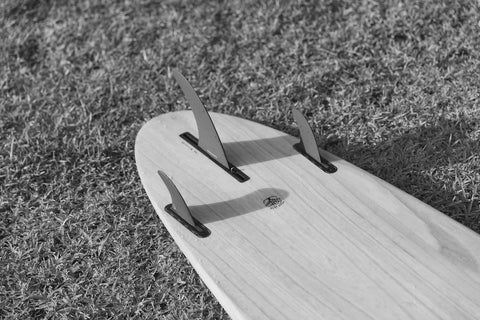
In addition to the center fin, two side fins (also known as side bites) are utilized, combining the characteristics of a tri-fin and a single fin. Similar to single fins, this setup is more commonly found on longboards and mid-length surfboards.
With a good balance of stability (straightness) and maneuverability (rotation), it's suitable for a variety of surfing styles. This versatile setup can be enjoyed as a single fin by removing the side fins.
1.3. Tri-Fin
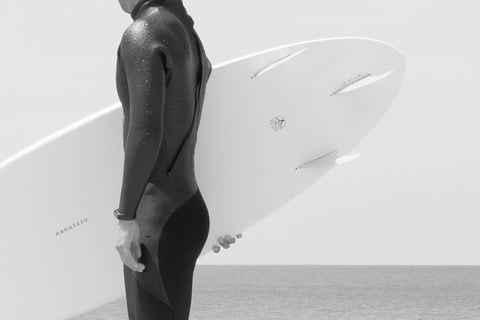
A board with three fins, often used on general shortboards, offers a good balance between stability and maneuverability. The Tri-Fin setup is capable of handling large waves and a wide range of conditions.
1.4. Twin
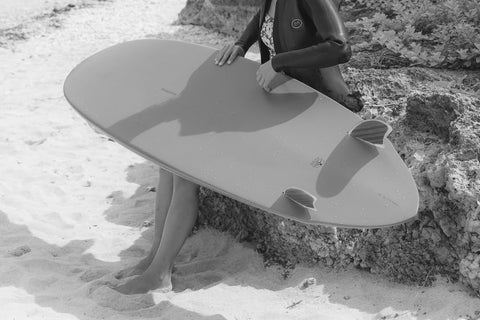
Twin fins, a type that has gained popularity in recent years, feature two fins on both sides of the board. Known for their speed and smooth turns, twin fins are well-suited for days with low waves and can handle small to medium waves for dynamic surfing.
Due to the absence of a center fin for straight-line stability, twin fins are typically positioned further towards the tail compared to the side fins of a tri-fin or single stabilizer setup. Additionally, the toe-in angle (the inward tilt relative to the stringer) is usually set smaller.
1.5. Quad

Quad fins consist of two fins attached to each side of the board, totaling four fins. This configuration facilitates smooth acceleration and turns, enabling surfers to enjoy a variety of surfing styles. The rear fin (back side) enhances stability compared to twin fins, allowing quad setups to handle larger waves effectively. Boards with rear fins maintain stability in straight-line surfing, while those with front fins prioritize turning performance.
2. How to choose fins
As is common with all types of fins, you need to keep the following in mind:
- The wider the front and rear sections, from the base to the tip of the fins, the better the straight-line stability; conversely, narrower width enhances rotational performance.
- The larger the sweep (greater backward tilt), the better the driveability, while a smaller sweep (smaller backward tilt) improves rotational performance.
- Larger (longer) boards will require larger fins in terms of area.
- The heavier the board and rider, the larger the area of fins required.
- The larger the center fin, the better the straight-line stability, and the larger the side fins, the better the rotation.
Please refer to each term provided below.
2.1. Single
To select the size of a single fin, for a standard width fin, a general rule of thumb is to calculate the height at 1 inch per 1 foot of the surfboard's length. For example, a 9-inch center fin would be suitable for a 9-foot board, while a 10-inch center fin would be appropriate for a 10-foot board. (In most cases, fin size refers to depth.)
If the fin is narrower, opt for a slightly larger size, and if it's wider, choose a slightly smaller size to maintain balance and performance.
2.2. Single Stabilizer (2+1)
Due to the presence of side fins, the center fin (single fin) typically needs to be smaller in size than a single fin setup.
The balance between the center and side fins significantly influences the feel of the ride. Larger side fins enhance maneuverability, while a larger center fin improves straight-line stability.
2.3. Tri-Fin
Tri-fins, commonly utilized on shortboards, are typically selected based on considerations such as size, the degree of sweep, and variations in materials. Fin sizes are often labeled as L (Large), M (Medium), or S (Small), depending on the brand, with different templates available to accommodate varying degrees of sweep.
If you're unsure about which fin to choose, starting with a standard sweep and selecting the recommended size for each brand or product is a good approach.
2.4. Twin
The concept of selecting twin fins follows similar principles to choosing other fins, but due to their dual configuration, twin fins are typically smaller than single fins and larger than tri-fins.
Twin fins also come in various shapes, including keel fins with a pronounced sweep, commonly used for fish surfboards. In recent years, the variety of twin-fin surfboards has expanded, emphasizing the importance of selecting fins that complement the surfboard's characteristics.
2.5. Quad
The concept of selecting quad fins is similar to that of other fins, but there are variations in the foil of the rear fins (the two fins on the back side), which affect straight-line stability.
A rear fin with a 50/50 foil (equally curved on both sides) provides greater straight-line stability, while a flat foil (flat on one side, curved on the other) offers enhanced maneuverability. There are also options with an 80/20 foil ratio available. Choose based on the characteristics of your surfboard and your personal preferences.
3. Fin Material
As the material changes, so does the hardness, weight, and ride quality. Here are some commonly used materials.
3.1. Plastics
It can be purchased at a very low price compared to other materials, making it attractive to beginners. These fins are highly flexible and often feature a rounded shape, reducing the likelihood of serious injury. However, they are relatively less durable, so they are not recommended for advanced or frequent surfers.
For increased durability, we recommend plastic fins, which are made by blending a certain amount of fiberglass with plastic.
3.2. Fiberglass
Compared to plastic, it offers greater rigidity and improved performance. It's highly recommended for intermediate and advanced surfers as it facilitates easier turns and better speed control.
3.3. Fiberglass Volan
This material is slightly more flexible than standard fiberglass and showcases a striking ring-like pattern.
3.4. Honeycomb
It's a lightweight fin that utilizes a hexagonal pattern core material at its center. This design is reputed to be sturdier than plastic yet more flexible than fiberglass. It's an ideal choice for those seeking lightweight fins.
3.5. Carbon Fiber
Carbon fiber fins are renowned for their lightweight yet exceptionally rigid construction. This attribute enhances their performance, making them the preferred choice for professionals and advanced users. However, it's important to note that this high level of performance comes with a corresponding high price tag.
4. Types of Fin Boxes That Fit
Finally, let's discuss the types of fin boxes. It's important to note that you won't be able to install the fins unless you purchase fins that match the fin box specifications of your surfboard.
4.1. US Box (Center Fin)
It's safe to assume that most surfboards and single fins on the market are made to this specification, unless otherwise noted. However, even if the width of the fin box is the same, there may be variations in length (shorter boards may have shorter fin boxes). We recommend that you ensure the fins you are buying fit the length of the fin box of your surfboard before making a purchase.
4.2. Single Tab (Futures)

Futures fin, sometimes known as a single tab, conforms to the fin's specifications. It features one hole in the box for inserting the fins and utilizes one screw to secure the fins in place.
4.3. Double Tab (FCS)
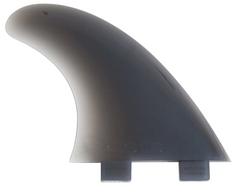
(Source :https://www.surffcs.com/)
Sometimes referred to as a double tab, it conforms to FCS's FCS I standards. The fin box features two holes for inserting fins and utilizes two screws to secure the fins in place.
4.4. FCS II (FCS2)
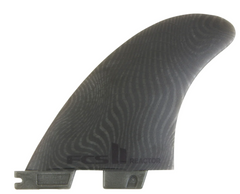
(Source:https://www.surffcs.com/)
The specifications adhere to FCS's FCS II standards. One notable feature is that the fins can be secured without the need for screws.
I hope you found this information helpful. Choosing fins can be challenging, so if you have any questions, please feel free to contact us anytime via chat or Instagram. For nanazero Surfboards, you can also refer to the recommended fins listed on each surfboard's page.
【Reference ://pocketsurf.jp/surfboard_fin】











